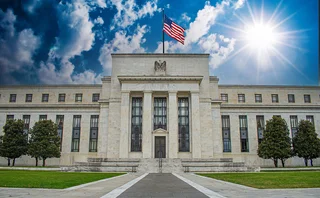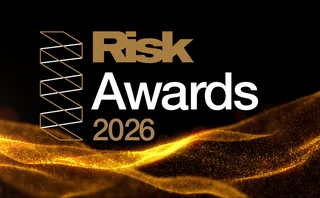
Podcast: Princeton’s Carmona on the future of quant education
Course director discusses machine learning explainability and reclaiming game theory from economists

In a wide-ranging Quantcast interview with Risk.net, René Carmona – director of Princeton’s master’s in finance programme – discusses everything from the impact of Trump administration policies on foreign students’ desire to study in the US, to his efforts to reclaim the field of game theory from being the sole preserve of economists.
Carmona, who has spent some five decades in mathematical academia, shares his thoughts on what has helped Princeton’s programme to succeed: the university has topped a number of industry polls, including Risk.net’s 2019 industry guide. He lists three factors: the amount of time core faculty members spend teaching on its courses; the relatively small size of its intake, at 25; and perhaps above all, what he dubs its secret weapon: its rich network of alumni, many of whom, like hedge fund manager Dario Villani, have gone on to build lofty careers in quant finance, before returning to teach, mentor and even help select the graduates who study on the programme.
“The Princeton alumni network is extremely powerful; they’re devoted to this institution. They spend a lot of time and a lot of money on the institution even years after leaving; we take full advantage of their presence and their desire to help,” says Carmona.
Princeton has a head start in this regard as one of the oldest dedicated quant finance master’s programmes, having first opened its doors in 1998. Asked about the biggest change he has seen in quant finance education in the intervening two decades, Carmona points to the impact the crisis had on the assumptions underlying pricing models for many derivatives products – viewed by some as the nadir of the quant profession – such as the Gaussian copula formula, widely blamed for the mispricing of trillions of dollars’ worth of credit derivatives and correlation trades.
“Some of the changes in the industry, we saw coming – and we worked to include these problems in our courses,” he says. “When the first worries about measures of risk occurred in the industry, we started teaching heavy-tailed distribution – various forms of dependencies and copula – even before the credit markets took off, and the copula became so central there.”
In part, he attributes the programme’s adaptiveness to industry trends to the varied input it receives from staff across multiple faculties: it is hosted by Princeton’s Bendheim Center, rather than an individual faculty. Courses thus receive guidance from academics based in a host of departments: mathematics and engineering, but also economics, computer science and operational research.
Turning to one of the fastest-growing areas of research in quant finance – one Princeton and many of its peers have added courses on – the teaching of machine learning, Carmona argues the rapid growth of the field is unlikely to decline any time soon.
In fact, he points to one of the largest areas of debate in the field at present – the challenge of explaining how models based on the self-learning techniques, particularly those plucked from the deep learning family of approaches, have arrived at their conclusion, which is increasingly seen as imposing a natural check on further development in the field – as a natural opportunity for quant academia.
The profession is well placed to provide the research power needed to develop machine learning algorithms that are more transparent, he argues: “I think there is an enormous opportunity for academics and practitioners alike to get involved.”
Turning lastly to his current areas of research, Carmona discusses his recent work on probabilistic theory in mean field games – a branch of game theory that deals with individual decision-making within large groups. Carmona published two 700-page tomes on the subject last year.
“Many colleagues find it absolutely insane,” he jokes, “[but] I thought it was a wonderful way for mathematicians to try and understand the behaviour of large crowds: pedestrians, birds flocking – or herds of traders trying to get into a congested trade,” he says. “I believe there are an enormous number of possible applications. Mathematicians have neglected game theory; John Nash got a Nobel Prize, but he got it in economics, before being recognised by mathematicians. Game theory has basically been handed over to economists, who teach it – very few maths departments do.”
Commentary by Tom Osborn
Index
00:00 Intro
01:20 Drivers of a successful master’s programme in quant finance
06:15 How has education in quant finance changed in the past few years?
11:35 Is there a gap between academia and industry?
15:13 P quants or Q quants? Where do European courses have room for improvement?
21:07 Is Princeton preparing more grads for the buy side?
24:05 The alumni network
26:15 Teaching of ML techniques: a long-lasting trend, or will it fade?
36:35 Brexit and US immigration policy: what is their effect on the influx of students in the US education system?
39:17 Current research on probabilistic theory on mean field games
To hear the full interview, listen in the player above, or download. Future podcasts in our Quantcast series will be uploaded to Risk.net. You can also visit the main page here to access all tracks, or go to the iTunes store or Google Podcasts to listen and subscribe.
Only users who have a paid subscription or are part of a corporate subscription are able to print or copy content.
To access these options, along with all other subscription benefits, please contact info@risk.net or view our subscription options here: http://subscriptions.risk.net/subscribe
You are currently unable to print this content. Please contact info@risk.net to find out more.
You are currently unable to copy this content. Please contact info@risk.net to find out more.
Copyright Infopro Digital Limited. All rights reserved.
As outlined in our terms and conditions, https://www.infopro-digital.com/terms-and-conditions/subscriptions/ (point 2.4), printing is limited to a single copy.
If you would like to purchase additional rights please email info@risk.net
Copyright Infopro Digital Limited. All rights reserved.
You may share this content using our article tools. As outlined in our terms and conditions, https://www.infopro-digital.com/terms-and-conditions/subscriptions/ (clause 2.4), an Authorised User may only make one copy of the materials for their own personal use. You must also comply with the restrictions in clause 2.5.
If you would like to purchase additional rights please email info@risk.net
More on Risk management
Squashing CVA still dominates XVA desks’ priorities
Dealers favour options-based strategies to manage charges; some explore contingent CDSs amid rising exposures
EU single portal faces battle to unify cyber incident reporting
Digital omnibus package accused of lacking ambition to truly streamline notification requirements
XVA desks prioritise core tech upgrades over AI
Vendor upgrades, cloud-native rebuilds and sensitivities tooling dominate 2026 budget road maps
Chicago data centre outage forced clearers to turn away clients
Friday’s cooling system failure highlights cracks in tech and concentration risk of big CCPs
LCH goes live with agency model for client clearing
English law version of FCM-style European trust model approved, as Eurex lags behind
US banks hoping for end of DFAST global market shock
As Fed consults on stress-test reform, lobby group argues regulator is double-counting market risk
NMRF framework: does it satisfy the ‘use test’?
Non-modellable risk factors affect risk sensitivity and face practical and calibration difficulties, argue two risk experts
Risk Awards 2026: The winners
Citi claims top derivatives prize, lifetime award for Dennis McLaughlin, JP Morgan wins equities







